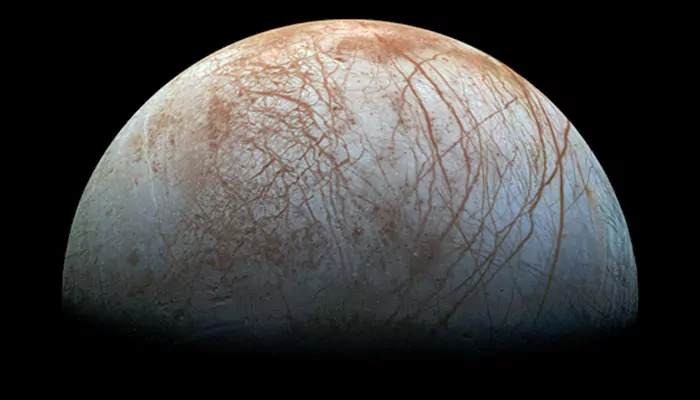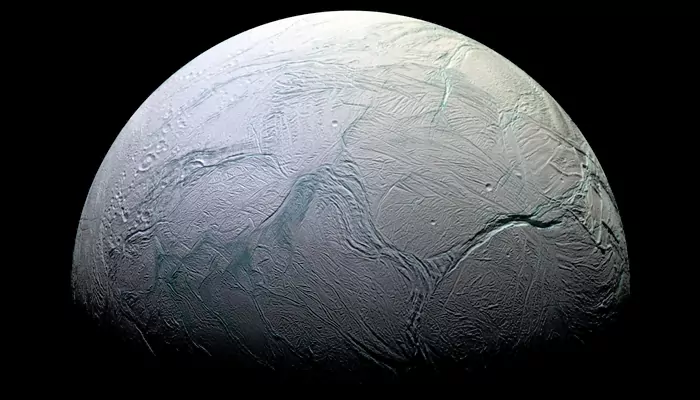NASA Discovers Potential for Life on Jupiter and Saturn's Moons: Exploring How Europa's Oxygen and Enceladus's Phosphorus Could Support Life
- Admin
- 1 year ago
- 4 minutes read

As humanity's quest to discover extraterrestrial life intensifies, a recent scientific discovery by NASA has revealed that life can possibly exist on two nearby celestial bodies: Europa and Enceladus. Saturn’s moon- Enceladus- releases an abundance of ice and water which contain phosphorus, and Jupiter’s icy moon-Europa- has plenty of oxygen on its surface. Both of these elements are necessary for survival of life.
Elements Necessary for Life
As we already know, life depends on several fundamental elements, and phosphorus and oxygen are two of the most important aspects of this process. Oxygen is the key element required in respiration, a cellular process of releasing energy from organic molecules. On planet Earth, aerobic organisms like human beings and most animals, rely on this essential element to sustain life.
Phosphorus too is an essential element which makes up DNA, RNA, and ATP (Adenosine Triphosphate). ATP is an important molecule in our body as it stores and transfers energy within cells. The very foundation of the genetic material in living organisms and the process of energy transfer wouldn’t be possible without phosphorus.
Europa's Oxygen

Image credit- NASA
One of Jupiter’s largest moons- Europa- is enwrapped by a thick layer of ice on the surface. Scientists believe that, beneath this icy crust, lies a huge ocean full of liquid water. According to revelations by various space missions, Europa’s surface is rich in oxygen. The oxygen is probably created by the interaction between the ice and the moon’s magnetosphere. This oxygen can easily dissolve in the subsurface oceanic water, thus creating the probability of life there.
Comparison with Earth’s Early Life: If we had to draw a comparison between life on Jupiter’s moon and Earth, then we can imagine that life first evolved on Earth in an oxygenated underwater habitat. The presence of oxygen in Europa’s ocean will allow aerobic organisms to thrive. If microorganisms similar to extremophiles (organisms which can survive extreme conditions) on Earth are also found in Europa’s ocean, then they can utilize the oxygen to sustain life.
Enceladus's Phosphorus

Image credit- NASA
The findings on one of Saturn’s smaller moons- Enceladus- have truly astonished scientists. The geysers found on the moon’s south pole spouts water ice, organic molecules, and other elements into outer space from a subsurface ocean lying beneath the icy crust of the moon. When these ejected plumes were analysed, scientists discovered phosphorus in them. Remember, phosphorus too is a critical element for life.
Significance in Astrobiology
These discoveries can make a significant stride in the research and the field of astrobiology. These findings suggest that the possibility of finding the essential elements for life on other celestial bodies is not that uncommon, as perceived before. Europa’s oxygen and Enceladus’s phosphorus findings denote a fair chance of life growing and thriving in these moons. Future NASA missions like Europa Clipper and Enceladus Life Finder will further study these moons in detail, scouring for direct signs of life and understanding their habitability. Scientists might be able to gain deeper insights into these moons and discover the conditions that can foster the development of life.
Now, should we be really concerned about extraterrestrial life? Maybe yes, maybe no. Even if there’s extraterrestrial life looming out there, we need not be worried as long as they are not trying to establish a connection with us. However, the possibility of extraterrestrial life existing is not null. With elements like oxygen and phosphorus being found on Europa and Enceladus, we can expect some form of life to grow and thrive on these moons. This creates a doorway for the scientific community to further investigate and find out more about the chances of survival of life on these moons.



.webp)
.WEBP)
.WEBP)
.webp)
.webp)


.webp)
.webp)
.webp)